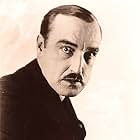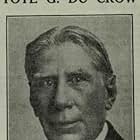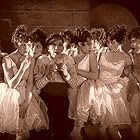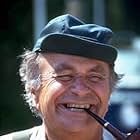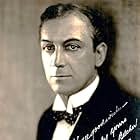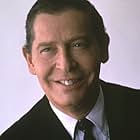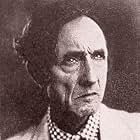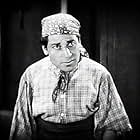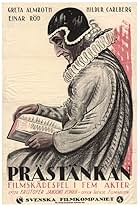IMDb RATING
7.1/10
2.9K
YOUR RATING
A seemingly idiotic fop is really the courageous vigilante Zorro, who seeks to protect the oppressed.A seemingly idiotic fop is really the courageous vigilante Zorro, who seeks to protect the oppressed.A seemingly idiotic fop is really the courageous vigilante Zorro, who seeks to protect the oppressed.
- Awards
- 1 win
Sidney De Gray
- Don Alejandro
- (as Sydney De Gray)
Noah Beery Jr.
- Seven Year Old Boy
- (uncredited)
Charles Belcher
- Undetermined Minor Role
- (uncredited)
Milton Berle
- Boy
- (uncredited)
Manuel Caballero
- Villager
- (uncredited)
John George
- Prisoner in Jail
- (uncredited)
Augustina López
- Woman at Fray Felipes Trial
- (uncredited)
- Director
- Writers
- All cast & crew
- Production, box office & more at IMDbPro
Storyline
Did you know
- TriviaIn the Golden Age of Comic Books, this was the film to which Thomas and Martha Wayne took their young son Bruce on the night that they were murdered in front of him in Gotham City in 1920, the experience which led him to become Batman.
- GoofsWhen Fray Felipe is receiving his lashes, there are horizontal lacerations along the left side of his back. The camera angle then widens to reveal two vertical lacerations --- one in the center of his back and one to the right --- while the laceration on the left side of the back is gone.
- Quotes
[Diego is apathetically wooing the woman his father commanded him to marry]
Zorro: I have a servant - a wonder at the guitar. Tonight I shall order him to come out and play beneath your window.
Lolita Pulido: I have a maid - passionately fond of music!
- Alternate versionsThere is an Italian edition of this film on DVD, distributed by DNA Srl: "IL SEGNO DI ZORRO (1920) + I TRE MOSCHETTIERI (1921) + ROBIN HOOD (1922)" (3 Films on a single DVD), re-edited with the contribution of film historian Riccardo Cusin. This version is also available for streaming on some platforms.
- ConnectionsEdited into Jekyll & Canada (2009)
Featured review
THE MARK OF ZORRO (United Artists, 1920), directed by Fred Niblo, based on the novel "The Curse of Capristano," marked the debut of Douglas Fairbanks in what he does best, swashbuckling adventure. This also set the pattern for other masked heroes created in later years, ranging from The Lone Ranger to comic book heroes as Spider-Man or Batman, among others.
The story, set in the 19th century, focuses on the corruption in politics in Old California in which a mysterious masked man dressed in a dark cloak, avenges the wrongs of the community, and leaving his "Z" mark with his sword wherever he goes, even, as with the very first shot in the opening of the story, on the cheek of one of the soldiers. The question to this mystery is "who is this masked man known as Zorro?", the man who wants to right the injustices done to the common people. At the same time, there is Don Diego Vega (Douglas Fairbanks), a young man who has just returned from his education in Spain to be with his father, appearing to all as a foppish weakling whose more interested in music and poetry than fighting for the common cause. He even gives the impression that no woman would ever marry him. Even the beautiful Lolita (Marguerite De La Motte) finds Don Diego not to her liking but Zorro fascinating. But of course, as with the mild-mannered reporter of Clark Kent turning into Superman, Don Diego Vega becomes Zorro when necessary, full of confidence and quick with the sword, plus sporting his flashing smile, especially after winning his defeat.
Also seen in the supporting cast are Noah Beery as Sergeant Gonzalez; Robert McKim as Captain Ramon; Charles Hill Mailes as Don Carlos; Walt Whitman as Frey Felipe, among others. Beery as Gonzalez has one of his most memorable moments on screen in a well staged presentation in which he crosses swords with Zorro. Other noteworthy scenes include Zorro's rescuing a Padre from being flogged; and Zorro's climax which he swings into action avenging with enemies of the state.
Marguerite De La Motte, whose name isn't that well known today, was a frequent Fairbanks co-star and notably his favorite leading lady. Aside from THE MARK OF ZORRO, she and Fairbanks appeared in ARIZONA (1918), the modern-day comedy titled THE NUT (1921); THE THREE MUSKETEERS (1921), and its sequel, THE IRON MASK (1929). She was in her day what Olivia De Havilland was to swashbuckler Errol Flynn in his adventure sagas of the 1930s and '40s, a decorative co-star.
Obviously a big success in 1920, and ranking one of the best known comedic adventures of the silent screen, THE MARK OF ZORRO did enjoy frequent TV revivals, especially on public television way back in 1971 during its popular 13-week series of THE SILENT YEARS as hosted by Orson Welles, which print, from the Killiam collection, features color tinting and an excellent piano score by William Perry. Over the years, THE MARK OF ZORRO has been available on video cassette, notably through Blackhawk Video, others with different underscoring, ranging from organ score to even slow playing violins, but none can beat the great Perry piano score, which helps the presentation this silent movie move along at a very fast pace. As the popularity of cable television began to increase by the 1980s, THE MARK OF ZORRO did play to a new audience on Arts and Entertainment (A&E) before going on American Movie Classics (with organ score) and Turner Classic Movies (first with the William Perry piano score on its "Silent Sunday Nights" presentations, then, years later, with restored print with corrected silent speed and new but unexceptional orchestral score).
Hollywood has seen other Zorros in the future, the best known being the 1940 sound remake for 20th Century-Fox starring another screen team of Tyrone Power and Linda Darnell; Reed Hadley in the Republic chaptered serial, ZORRO'S FIGHTING LEGION (1939); as well as the Disney TV series of the 1950s starring Guy Williams, for which baby boomers of that era remember so well. All these actors manage present Zorro in their own original style, none trying to copy or rip-off the Fairbanks carnation, but all owing to the Fairbanks character.
THE MARK OF ZORRO included a sequel, fortunately not ZORRO 2, as it would be titled today, but as DON Q, SON OF ZORRO, in 1925, in which Fairbanks plays both father and son, with the son dominating the storyline. Fairbanks original screen hero comes to life in this fast-paced 90 minute adventure (there is also a video presentation that includes it in video acu-speed running nearly two hours) which seems to improve with each repeated viewing, especially with the great William Perry piano score. Long live the legend of Zorro.(***)
The story, set in the 19th century, focuses on the corruption in politics in Old California in which a mysterious masked man dressed in a dark cloak, avenges the wrongs of the community, and leaving his "Z" mark with his sword wherever he goes, even, as with the very first shot in the opening of the story, on the cheek of one of the soldiers. The question to this mystery is "who is this masked man known as Zorro?", the man who wants to right the injustices done to the common people. At the same time, there is Don Diego Vega (Douglas Fairbanks), a young man who has just returned from his education in Spain to be with his father, appearing to all as a foppish weakling whose more interested in music and poetry than fighting for the common cause. He even gives the impression that no woman would ever marry him. Even the beautiful Lolita (Marguerite De La Motte) finds Don Diego not to her liking but Zorro fascinating. But of course, as with the mild-mannered reporter of Clark Kent turning into Superman, Don Diego Vega becomes Zorro when necessary, full of confidence and quick with the sword, plus sporting his flashing smile, especially after winning his defeat.
Also seen in the supporting cast are Noah Beery as Sergeant Gonzalez; Robert McKim as Captain Ramon; Charles Hill Mailes as Don Carlos; Walt Whitman as Frey Felipe, among others. Beery as Gonzalez has one of his most memorable moments on screen in a well staged presentation in which he crosses swords with Zorro. Other noteworthy scenes include Zorro's rescuing a Padre from being flogged; and Zorro's climax which he swings into action avenging with enemies of the state.
Marguerite De La Motte, whose name isn't that well known today, was a frequent Fairbanks co-star and notably his favorite leading lady. Aside from THE MARK OF ZORRO, she and Fairbanks appeared in ARIZONA (1918), the modern-day comedy titled THE NUT (1921); THE THREE MUSKETEERS (1921), and its sequel, THE IRON MASK (1929). She was in her day what Olivia De Havilland was to swashbuckler Errol Flynn in his adventure sagas of the 1930s and '40s, a decorative co-star.
Obviously a big success in 1920, and ranking one of the best known comedic adventures of the silent screen, THE MARK OF ZORRO did enjoy frequent TV revivals, especially on public television way back in 1971 during its popular 13-week series of THE SILENT YEARS as hosted by Orson Welles, which print, from the Killiam collection, features color tinting and an excellent piano score by William Perry. Over the years, THE MARK OF ZORRO has been available on video cassette, notably through Blackhawk Video, others with different underscoring, ranging from organ score to even slow playing violins, but none can beat the great Perry piano score, which helps the presentation this silent movie move along at a very fast pace. As the popularity of cable television began to increase by the 1980s, THE MARK OF ZORRO did play to a new audience on Arts and Entertainment (A&E) before going on American Movie Classics (with organ score) and Turner Classic Movies (first with the William Perry piano score on its "Silent Sunday Nights" presentations, then, years later, with restored print with corrected silent speed and new but unexceptional orchestral score).
Hollywood has seen other Zorros in the future, the best known being the 1940 sound remake for 20th Century-Fox starring another screen team of Tyrone Power and Linda Darnell; Reed Hadley in the Republic chaptered serial, ZORRO'S FIGHTING LEGION (1939); as well as the Disney TV series of the 1950s starring Guy Williams, for which baby boomers of that era remember so well. All these actors manage present Zorro in their own original style, none trying to copy or rip-off the Fairbanks carnation, but all owing to the Fairbanks character.
THE MARK OF ZORRO included a sequel, fortunately not ZORRO 2, as it would be titled today, but as DON Q, SON OF ZORRO, in 1925, in which Fairbanks plays both father and son, with the son dominating the storyline. Fairbanks original screen hero comes to life in this fast-paced 90 minute adventure (there is also a video presentation that includes it in video acu-speed running nearly two hours) which seems to improve with each repeated viewing, especially with the great William Perry piano score. Long live the legend of Zorro.(***)
Details
- Release date
- Country of origin
- Language
- Also known as
- The Curse of Capistrano
- Filming locations
- Production company
- See more company credits at IMDbPro
- Runtime1 hour 19 minutes
- Sound mix
- Aspect ratio
- 1.33 : 1
Contribute to this page
Suggest an edit or add missing content
















